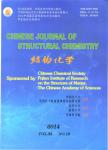One-pot Multicomponent Synthesis, Spectroscopy, Crystal Structures and Theoretical Calculations of 3-Cyano-4-(4-hydroxy-3-methoxyphenyl)-6-phenyl-2(1H)-pyridinone and 3-Cyano-4-chlorophenyl-6-(4-tolyl)-2(1H)-pyridinone
One-pot Multicomponent Synthesis, Spectroscopy, Crystal Structures and Theoretical Calculations of 3-Cyano-4-(4-hydroxy-3-methoxyphenyl)-6-phenyl-2(1H)-pyridinone and 3-Cyano-4-chlorophenyl-6-(4-tolyl)-2(1H)-pyridinone作者机构:Chemistry Department Faculty of Science King Abdulaziz University Centre of Excellence for Advanced Materials Research (CEAMR)King Abdulaziz University Department of Chemistry University of Jeddah Department of Chemistry University of IBB
出 版 物:《Chinese Journal of Structural Chemistry》 (结构化学(英文))
年 卷 期:2019年第38卷第3期
页 面:448-463页
核心收录:
学科分类:0817[工学-化学工程与技术] 08[工学]
基 金:Standard acknowledgments include financial support and technical assistance and may include dedications memorials and awards
主 题:crystal structures NBO one-pot multicomponent system 2-pyridinone TD-DFT
摘 要:Pyridinone derivatives are of great interest in medicinal chemistry where they were found to be potent to various diseases. Their metal complexes added more value to their applications. Here, we have synthesized two 2-pyridinone derivatives(3-cyano-4-(4-hydroxy-3-methoxyphenyl)-6-phenyl-2(1 H)-pyridinone and 3-cyano-4-chlorophenyl-6-(4-tolyl)-2(1 H)-pyridinone) using one-pot multicomponent system. They were well characterized using spectroscopic techniques like nuclear magnetic resonance(NMR-1 H & 13 C), Fourier transform infrared(FT-IR) and UV/Vis spectroscopy. The final structures were determined using single-crystal X-ray diffraction technique which helps us to determine their geometries. Density functional theory(DFT) and time-dependent density functional theory(TD-DFT) with suitable basis-sets of calculations have correctly simulated these spectroscopic parameters. The intramolecular charge transfer(ICT) of both substrates has been discussed using natural bond orbital(NBO) technique. Molecular electrostatic potential(MEP) surfaces showed their reactive locations for intermolecular charge transfer. Compared to p-nitroaniline(pNA), both substrates were shown to have substantial molecular hyperpolarizability.



